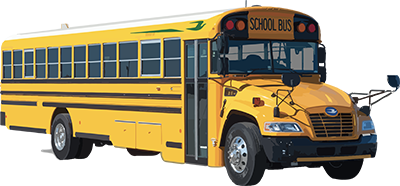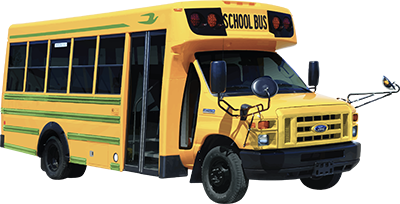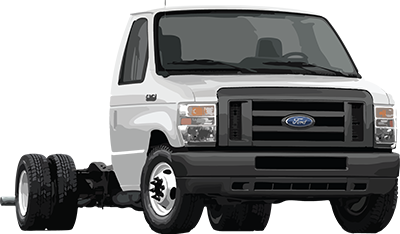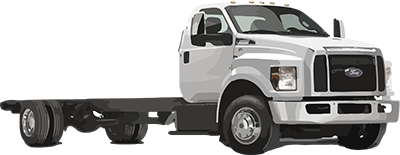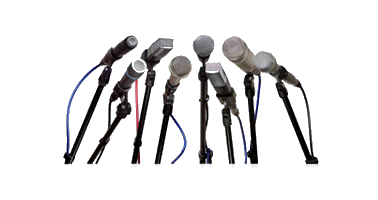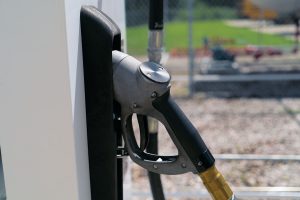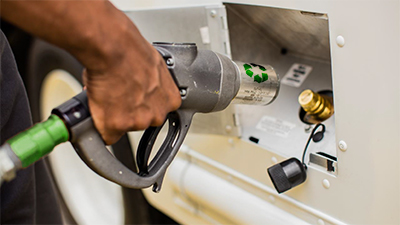 How can a dime be worth dollars? Any math teacher would tell you that doesn’t compute. Yet, when it comes to determining total cost of ownership of a fleet asset, a 10-cent increase at the pump can cost thousands of dollars over the lifecycle of that vehicle.
How can a dime be worth dollars? Any math teacher would tell you that doesn’t compute. Yet, when it comes to determining total cost of ownership of a fleet asset, a 10-cent increase at the pump can cost thousands of dollars over the lifecycle of that vehicle.
WLPGA Recognizes Uphaus
WLPGA
Congrats to our marketing director, Chelsea Uphaus, for being part of the World LP Gas Association’s nominating class of 2020! She’s committed to our mission to design and develop the most advanced clean transportation solutions, and has led strategic efforts to build propane partnerships.
Six South Dakota school districts received Department of Environment & Natural Resources funding to purchase emissions-reducing propane autogas school buses. The districts chose propane buses because they emit fewer greenhouse gases, smog-producing hydrocarbons and nitrogen oxides compared with the diesel buses replaced, and propane operating costs are significantly lower. “Our Blue Bird propane buses have cut our costs in half. On average, our diesel buses cost $5,000 per year to run, while our propane buses are only $2,500,” says Lance Gerry, fleet manager for Harrisburg School District.
Six South Dakota school districts received Department of Environment & Natural Resources (DENR) funding to purchase emissions-reducing propane autogas school buses. Studies have shown that propane buses emit fewer greenhouse gases, smog-producing hydrocarbons, and nitrogen oxides compared with the diesel buses.
There are several reasons why Ron Farrand Jr., director of Carmel Clay Schools facilities and transportation, is a proponent of propane buses. The school district has 24 propane Type A or mid-size Type C buses, which are about two-thirds of the district’s smaller bus fleet. The buses serve 12 to 30 passengers.
03.29.2021 — Six South Dakota school districts received Department of Environment & Natural Resources (DENR) funding to purchase emissions-reducing propane autogas school buses. The districts chose Blue Bird Vision Propane buses because they emit fewer greenhouse gases, smog-producing hydrocarbons and nitrogen oxides compared with the diesel buses replaced, and propane operating costs are significantly lower.
In 2008, HVAC company Gibson’s Heating & Plumbing decided to convert its fleet to bi-fuel vehicles, operating on both propane and gasoline. While the Indiana-based company enjoyed lower operational costs and a reliable fuel system, more maintenance was required to manage the vehicles, prompting the company to look into propane-only options. “Our service vehicles are out on the road all day, every day. We need them to be dependable,” says Mark Gibson, president of Gibson’s Heating & Plumbing.
 No doubt, the last 12 months have been unprecedented for everyone, both personally and professionally. Despite the challenges, it gave us a chance to pause and reassess our strategy and technology roadmap with a focus of helping our customers and partners bridge the gap from diesel to something more environmentally and economically friendly.
No doubt, the last 12 months have been unprecedented for everyone, both personally and professionally. Despite the challenges, it gave us a chance to pause and reassess our strategy and technology roadmap with a focus of helping our customers and partners bridge the gap from diesel to something more environmentally and economically friendly.
Micro Bird’s Type A propane school bus has received certification from California’s air quality agency. The manufacturer’s G5 Type A school bus, equipped with Roush CleanTech’s Gen 5 propane fuel system, is reportedly the first Type A propane vehicle to be certified to the California Air Resources Board’s (CARB’s) optional low nitrogen oxide (NOx) emissions standard of 0.05 grams per brake horsepower-hour (g/bhp-hr), according to a news release from Micro Bird and Roush CleanTech. The certification reportedly makes the G5 Type A school bus 75% cleaner than federal U.S. emission standards.
In a statement released Monday, Micro Bird claims to be the first to bring to market a Type A propane autogas school bus with low nitrogen oxides. The company’s G5 Type A bus equipped with ROUSH CleanTech’s Gen 5 propane fuel system is certified to California Air Resources Board’s optional low nitrogen oxide emissions standard of 0.05 grams per brake horsepower-hour (g/bhp-hr), making it 75% cleaner than federal U.S. emission standards. Type A buses, made of a bus body constructed on a cutaway front-section vehicle, usually carry nine to 36 students.

